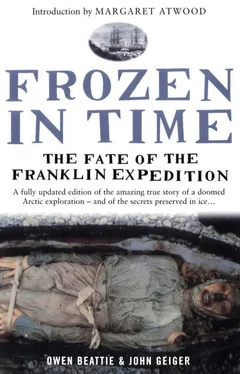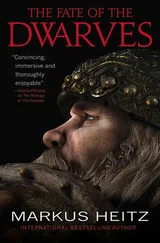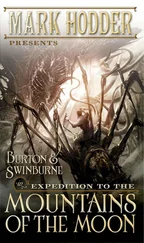Rats were a common problem on nineteenth-century ships and caused difficulties even among Arctic expeditions. Elisha Kent Kane, the United States Navy officer, had experienced severe problems with the vermin while commanding the Advance in the Franklin search from 1853 to 1855:
They are everywhere… under the stove, in the steward’s lockers, in our cushions, about our beds. If I was asked what, after darkness and cold and scurvy, are the three besetting curses of our Arctic sojourn, I should say RATS, RATS, RATS.
…it became impossible to stow anything below decks. Furs, woollens, shoes, specimens of natural history, everything we disliked to lose, however little valuable to them, was gnawed into and destroyed.
Even efforts to fumigate the ship with the “vilest imaginable compounds of vapours—brimstone, burnt leather, and arsenic” failed to get rid of the rats.
Notman had compared the X-rays of Hartnell with those just taken of Braine and described one interesting difference to Beattie: “With Hartnell’s skull we could not penetrate to see bony details with X-rays because of the solid block of ice inside. That’s what is creating this uniform whiteness,” he said, pointing at the X-ray. “In contrast, Braine’s skull could be penetrated quite easily. I really don’t have any explanation for that because they were buried under similar circumstances.”
Further examination of the X-rays revealed some degenerative arthritic changes in the hands, possibly related to occupational stresses. The feet also showed arthritic changes, in particular, the big toes had a condition called hallux rigidus. These observations would be consistent with a man of Braine’s age and occupation. In addition to arthritic changes, small bony projections, probably benign bone tumours ( osteochondromas), were seen in the bones of the knees (on the tibias).
The autopsy took seven hours and was extremely comprehensive. Like Hartnell’s, it was performed on the ground with the body resting on a sheet of white plastic. Written and recorded accounts were made during the whole period, and a thorough photographic record taken. Beattie assisted Amy during the autopsy, labelling storage containers and collecting tissue samples.
Unlike either Torrington or Hartnell, Braine was partially decomposed, demonstrating that some time had elapsed after William Braine’s death before the burial actually took place. An explanation for this apparent delay is difficult to find, though two possibilities were discussed. During the spring of 1846, parties were sent away from the ships to survey parts of nearby Devon Island. Franklin campsites had been discovered by searchers north of Beechey Island on the west coast of Devon Island and at Cape Riley. It is possible Braine had been with one of these parties when he died; after suffering a rapid decline in health in the manner of later sledge crews, some members of which became so ill that they had to be hauled back as passengers on the sledges they were meant to be pulling. There was even physical evidence to support this: The presence of ulcerations over the anterior surface of both shoulders indicated the likelihood of abrasion from sledge hauling. With two graves already located at Beechey Island, his body would have been returned for burial at the tiny cemetery. Wrapped and secured to a sledge he would have frozen within a few hours, though decomposition would have already set in. When the sledge party arrived at the ships, he may have been taken on board for examination by the doctors, followed by preparation for burial. During the time spent on ship, the rate of decay would have accelerated. Another possibility was related to poor weather. Braine may have died when the weather conditions did not allow his immediate burial. This seems a less reasonable explanation, as the body could easily have been placed in a cool or even freezing part of the ship, where the amount of observed decomposition would have been far less likely to occur. Whatever the reason, the decomposition was at least a possible explanation for Braine’s body being placed quickly and without care in the coffin.
During this final autopsy, Beattie wondered what Torrington, Hartnell and Braine would have thought about his research. The three men were explorers in their own time, either through conscription or by choice, involved in dangerous exploits that embodied the Victorian ideals of adventure, imperialism and self-sacrifice. Now, at least in body, they had emerged from the ice to briefly visit the 1980s. They could not have foretold such an odyssey.
With the autopsy and X-rays complete, a plane arrived on 20 June to pick up Amy, Notman, Anderson, Schweger and Spenceley. Those remaining on site wrapped Braine’s body tightly in cotton and lowered it to Beattie and Savelle, who were standing in the grave. Gently, they laid the body in the coffin and positioned it carefully. Minutes before, Beattie had spread the shroud along the bottom of the coffin and, once the body had been placed on it, the left side of the shroud was brought over the body, followed by the right side, which was tucked underneath. The kerchief, undershirt, sweater, shirt and stockings, each wrapped in protective mylar, were then placed in the coffin and the lid lowered into position. The north side of the tent was pulled back, and the sun, low in the northern sky at 11 PM, illuminated the headboard and inside walls of the tent. Standing beside the grave, bathed in brilliant yellow sunlight, the team silently gave a moment of reflection and respect to William Braine. Beattie then jumped into the grave, and a bucket of gravel was passed down to him. He slowly emptied the bucket over the plaque, spreading the gravel in a protective layer on its surface.
The filling of the grave began immediately. The huge pile of gravel, resting beside the grave, attested to the depth of the burial. Two people shovelled gravel into buckets while the others took turns carrying the buckets to the grave and pouring them in. Soon the gravel pile began to shrink, and within three hours the grave had been filled to a point where the large rocks could be repositioned on the surface—but mental and physical exhaustion had taken hold, and this task would be completed the following day.
Several days were spent completing the restoration of the site, and, after dismantling their camp, the remaining researchers left in two groups: Beattie, Nungaq and Kowal on 24 June, with Carlson, Savelle and Damkjar following on 27 June.
Other than the Franklin search expeditions of the 1850s, no one else had spent so much time at the site where the crews of the Erebus and Terror had experienced their first Arctic winter, and the early searchers had departed with many questions still unanswered. But Beattie left Beechey Island convinced that Petty Officer Torrington, Able Seaman Hartnell and Private Braine would provide some answers, for it seemed they had lived again for a few brief hours during the Arctic summers of 1984 and 1986.
16
Understanding a Disaster
The frozen tissue, hair and bone samples from both John Hartnell and William Braine were carried back to Edmonton in a small insulated cooler, and, within two days of leaving Beechey Island, were stored in a deep freeze at the University of Alberta Hospital. So much depended on this tiny box of samples. This was the evidence that would either confirm or defeat Beattie’s theory about the impact of lead on the Franklin expedition.
If trace element analysis of the samples revealed lead levels dramatically lower than had been obtained from Torrington and the Booth Point skeleton, then the source of lead exposure for those previously tested would have to be re-examined. The question would then be: Why only Torrington and not the others? But if elevated levels of lead were identified during the testing of the remains of Hartnell and Braine, then a much more substantial argument could be made for the underlying impact that lead would have had on the expedition. Five years of research now hinged on the extraction and analysis of the information locked in the tissue samples.
Читать дальше










